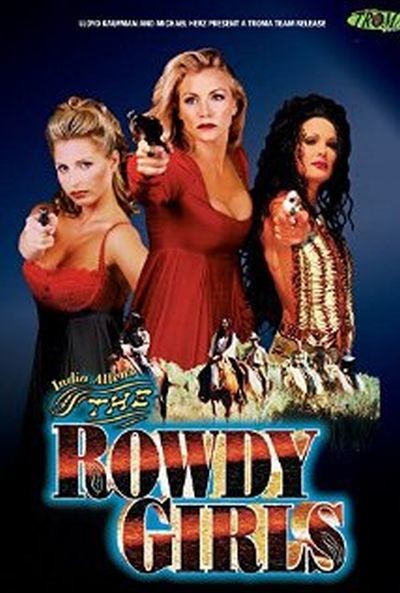★★★
“Mostly hit, and several misses.”
 Well, after taking ten years to get from the third film to the first, the gap between first and second is considerably shorter. I think this probably works the best of the trilogy, not least because there are a few good GWG to be found here, not just Secret Service Agent Alex McGregor. This time, she’s played by Hannah – allegedly, seeing her here got Tarantino to cast her in Kill Bill – rather than Hemingway. The latter supposedly declined due to a combination of scheduling conflicts and script concerns. Frankly, I think this is a bit more solid than the original film. It begins with a nice nod back to First Daughter, opening again with an attack on President Jonathan Hayes (Harrison) – except, this time it’s just a training exercise.
Well, after taking ten years to get from the third film to the first, the gap between first and second is considerably shorter. I think this probably works the best of the trilogy, not least because there are a few good GWG to be found here, not just Secret Service Agent Alex McGregor. This time, she’s played by Hannah – allegedly, seeing her here got Tarantino to cast her in Kill Bill – rather than Hemingway. The latter supposedly declined due to a combination of scheduling conflicts and script concerns. Frankly, I think this is a bit more solid than the original film. It begins with a nice nod back to First Daughter, opening again with an attack on President Jonathan Hayes (Harrison) – except, this time it’s just a training exercise.
McGregor is now the head of the Secret Service, and is coming down hard on new agent Kelsey Innes, for much the same reason McGregor suffered the same treatment. But more pressing matters are at hand, because the Vice President has a plot to kill his boss and take over. To that end, he has hired international assassin Nina Stahl (Grauer) and her hacker brother, who plan to assassinate Harrison during a ceremony in Seattle, with the help of a mole inside the local Secret Service office. Returning from the first picture is wilderness guide Grant Coleman (Savant), whose attempts to propose to Alex keep getting interrupted, and who is impressively unfazed by the fact his girlfriend now looks radically different from last movie.
The concept here is still a little silly, but at least the threat here is genuine, with Stahl a decent adversary who poses a real threat to McGregor, Innes, etc. She additionally brings a nice line in femme fatale to her line of work, and I was surprised to see a not-exactly subtly incestuous vibe with her brother. It feels like Stahl has wandered in from a different franchise entirely. Again, it is a little disappointing that Grant ends up doing so much, in this case going toe-to-toe with Nina, while Alex is making her way up the mountain towards the assassin. However, the heroine still gets her licks in, and puts the pieces of the puzzle together before anyone else.
Unlike First Daughter, there’s a sense that most of the people involved here are relatively smart; or, at least, behave as if they are. The absence of the annoying teenage Presidential daughter – never seen or heard, but apparently now getting tattoos – feels like a positive development too. It still remains limited by being a TV movie, and the pauses for advert breaks are often painfully obvious (not helped by them not lining up with the Tubi advert breaks). However, I was definitely entertained, and if I had seen this when it came out in TBS at the turn of the millennium, I would likely not have changed the channel. It almost makes me want to re-review First Shot, and see if I was unnecessarily harsh to it. Almost…
Dir: Armand Mastroianni
Star: Daryl Hannah, Doug Savant, Gregory Harrison, Ona Grauer





 This opens with a scene that is almost a direct life from the similarly titled
This opens with a scene that is almost a direct life from the similarly titled  You’ll understand why, when skimming leisurely through a streaming channel on the Roku, I screeched to a halt at this title. Even though the “official” English title is just Killing Machine, I knew I immediately had to watch it. Yet, while the title
You’ll understand why, when skimming leisurely through a streaming channel on the Roku, I screeched to a halt at this title. Even though the “official” English title is just Killing Machine, I knew I immediately had to watch it. Yet, while the title  We recently wrote about the movie version of the Sheena story,
We recently wrote about the movie version of the Sheena story,  Usually she transforms into what she calls the “Darakna” – which essentially means she puts black mud on her body and gloves, with bone claws on to slash her enemies to death. Don’t worry: it’s neither bloody nor (after the first time they show it to us) very exciting. I just wonder if, by doing that, she also immediately became super-powered. though she already is a strong fighter. Or if it just made the killing easier for her, as she then wasn’t “quite herself” (to quote Norman Bates!).
Usually she transforms into what she calls the “Darakna” – which essentially means she puts black mud on her body and gloves, with bone claws on to slash her enemies to death. Don’t worry: it’s neither bloody nor (after the first time they show it to us) very exciting. I just wonder if, by doing that, she also immediately became super-powered. though she already is a strong fighter. Or if it just made the killing easier for her, as she then wasn’t “quite herself” (to quote Norman Bates!). That said, while the show (like most shows of its ilk at the time) is underwhelming compared to “Hercules” and “Xena”, I do think the screenwriters really tried to come up with as inventive stories as possible, given the fact that the “adventures in the jungle” was already a genre as dead as a door-nail. There are some good ideas here: plants that raise certain hormones in your blood, making you love-struck as well as murderous (therefore having Cutter and Sheena try to kill each other); a female black Rocky in the jungle, faced with countless attacks by her opponents; a kind of “X-files”-episode, with the audacity to play that show’s musical theme a couple of times in the episode; or the dangerous giant ants that eat anything. setting Cutter and Sheena in quite a distressing position.
That said, while the show (like most shows of its ilk at the time) is underwhelming compared to “Hercules” and “Xena”, I do think the screenwriters really tried to come up with as inventive stories as possible, given the fact that the “adventures in the jungle” was already a genre as dead as a door-nail. There are some good ideas here: plants that raise certain hormones in your blood, making you love-struck as well as murderous (therefore having Cutter and Sheena try to kill each other); a female black Rocky in the jungle, faced with countless attacks by her opponents; a kind of “X-files”-episode, with the audacity to play that show’s musical theme a couple of times in the episode; or the dangerous giant ants that eat anything. setting Cutter and Sheena in quite a distressing position.




 ★★★
★★★ All three, however, were clearly selected as much for their visual appeal, and the 25th century is not short of beautiful people – it’s also quite warm, going by the ah, flimsy clothing worn by the trio. Cleo and her former profession fit right in. But taking any of this seriously would largely be doing the show a disservice, because it’s clear it doesn’t take itself seriously. There isn’t really time for that kind of thing, with each episode barely 20 minutes, excluding opening (theme song sung by Torres, a funked-up and lyrically altered version of Zager and Evans’ one-hit wonder, In the Year 2525) and closing credits. There isn’t much time for anything, in fact: both characterization and plotting remain about as scanty as the outfits. Hel is thoughtful but can be distant; Sarge likes shooting things first and asking questions later; Cleo, to be honest, is mostly irritating, coming over as both whiny and rather vacuous.
All three, however, were clearly selected as much for their visual appeal, and the 25th century is not short of beautiful people – it’s also quite warm, going by the ah, flimsy clothing worn by the trio. Cleo and her former profession fit right in. But taking any of this seriously would largely be doing the show a disservice, because it’s clear it doesn’t take itself seriously. There isn’t really time for that kind of thing, with each episode barely 20 minutes, excluding opening (theme song sung by Torres, a funked-up and lyrically altered version of Zager and Evans’ one-hit wonder, In the Year 2525) and closing credits. There isn’t much time for anything, in fact: both characterization and plotting remain about as scanty as the outfits. Hel is thoughtful but can be distant; Sarge likes shooting things first and asking questions later; Cleo, to be honest, is mostly irritating, coming over as both whiny and rather vacuous.








 Patty (Eleniak) is in an abusive relationship, but finds an outlet through an unconventional source – boxing. This comes through her friend June (Ellis), who works occasionally as a ring-girl for a promoter (Doman). One of his fighters is Tommy (Colby), a part-time boxer whose main source of income is as a limo driver, but also helps run a gym in the upstate New York city of Troy, which helps keep the local kids out of trouble. Reluctantly, he agrees to train Patty, who develops, not only physical strength as a result, but the self-confidence to handle her situation.
Patty (Eleniak) is in an abusive relationship, but finds an outlet through an unconventional source – boxing. This comes through her friend June (Ellis), who works occasionally as a ring-girl for a promoter (Doman). One of his fighters is Tommy (Colby), a part-time boxer whose main source of income is as a limo driver, but also helps run a gym in the upstate New York city of Troy, which helps keep the local kids out of trouble. Reluctantly, he agrees to train Patty, who develops, not only physical strength as a result, but the self-confidence to handle her situation.